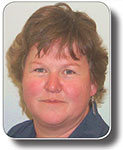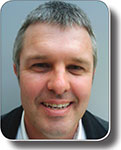Bight Basin acreage release—new exploration opportunities in a deep water frontier
Jennifer Totterdell A , Heike Struckmeyer A and Andrew Stacey AGeoscience Australia
The APPEA Journal 49(1) 491-504 https://doi.org/10.1071/AJ08032
Published: 2009
Abstract
In 2009, the Commonwealth Government is releasing six large exploration areas in the frontier Bight Basin. The areas lie in the Ceduna Sub-basin, in water depths ranging from 130 to 4,600 m. At present, no permits are held in this part of the basin. Most exploration drilling in the Bight Basin has focussed on the margins of the Ceduna Sub-basin and on the adjacent Duntroon Sub-basin. Gnarlyknots 1A, drilled by Woodside Energy and partners in 2003, is the only well to have attempted to test the thick, prospective Ceduna Sub-basin succession away from the margins of the sub-basin, but did not reach all its target horizons due to weather and ocean conditions.
The key to the petroleum prospectivity of the Ceduna Sub-basin is the distribution of the Late Cretaceous marine and deltaic facies. Recent dredging of Late Cenomanian–Turonian organic-rich marine rocks has confirmed the presence of high quality source rocks in the Bight Basin and has significantly reduced exploration risk. These potential source rocks are mature in the central part of the Ceduna Sub-basin and are likely to have generated and expelled hydrocarbons since the Campanian. Excellent reservoir rocks and potential intraformational seals are present in the Late Cretaceous deltaic successions and regional seals could be provided by Late Cretaceous marine shales. Interpretation of seismic data has identified numerous play types in the basin and some structures show amplitude anomalies, providing many exploration targets for explorers.

Jennifer Totterdell is project leader of Geoscience Australia’s Southern Frontiers Project. Since graduating from the Australian National University, Jennie has worked on a range of regional, thematic and basin studies at Geoscience Australia. In the last 10 years, her work has focused on offshore frontier basins, notably the Bight, Arafura and Browse basins. Her main areas of interest are the structural and stratigraphic evolution and petroleum potential of the southern Australian margin. Member: PESA. jennifer.totterdell@ga.gov.au |

Heike Struckmeyer is a principal research scientist in Geoscience Australia’s Petroleum and Marine Division. She graduated from the University of Göttingen, Germany, in 1981 and received a PhD from the University of Wollongong in 1989. Since joining Geoscience Australia in 1988, her work has been focused on the evolution and prospectivity of Australia’s northern, northwestern, eastern and southern margins, and on regional basin analysis and petroleum systems modelling. In recent years, she has worked on projects in the Browse, Bight and Arafura Basins. Member: AAPG and PESA. |

Andrew Stacey is a basin analyst/structural geologist working on Geoscience Australia’s Southern Frontiers Project where he is currently involved in seismic interpretation and structural mapping of the Bight and Otway-Sorell basins. Andrew received a BSc (Hons) in earth science from the University of Technology, Sydney in 2001 and recently completed a PhD at the University of Tasmania. Member: AAPG and PESA. |


